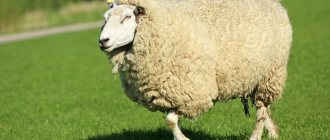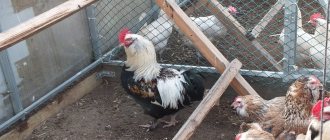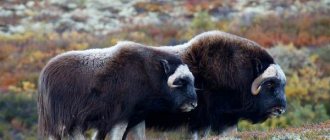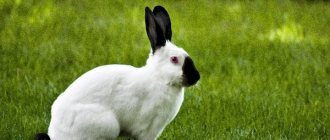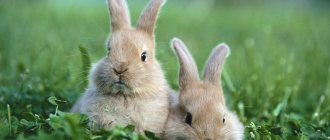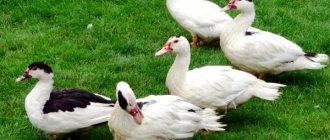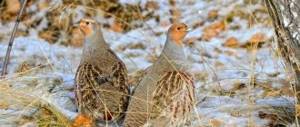A domestic sheep is a small ruminant mammal, the weight and length of which directly depend on the type of individual. From ancient times to the present day, animals have been kept in rural areas to obtain special benefits: meat, milk, wool.
There are about 6 hundred breeds of sheep, and each of them is useful for humans, because animal husbandry is one of the most popular activities in the world.
Popular types of domestic sheep
In order for livestock to live, develop and reproduce correctly, you need to choose the most suitable species for your area. It is important to know that some sheep easily adapt to any living conditions, while for others you need to create a better atmosphere.
In addition to species diversity, sheep can be divided into 5 main subtypes. Let's consider the most popular types of sheep for breeding, reproduction and obtaining necessary waste products.
Breeding
Breeding fat-tailed sheep can become quite a profitable business. However, before you start organizing your own business and purchasing animals, you should familiarize yourself with the features and rules of their breeding.
First of all, you need to understand that in order for such an activity to make sense and be profitable, you need to purchase a livestock that will consist of at least 12 animals.
This is justified by the fact that 1-2 rams will not bring you enough fat, milk or wool, but at the same time they will have to be properly cared for. That is why it is believed that it is much more profitable to purchase a small herd at once.
In order to begin direct breeding, you need to wait until the fat-tailed females reach sexual maturity. This usually occurs at 5-8 months of the animal’s life.
In general, the mating process can be carried out at any time, however, late autumn is considered the most favorable period.
If you plan to perform artificial insemination, it is recommended to carry it out during the same season.
Your herd of fat-tailed sheep should contain several males at the same time, who will serve as a producer.
The ideal option is a situation where you have a pair of main males on your property, as well as several spare males.
The pregnancy process in fat-tailed sheep lasts about 5 months, and the birth itself occurs quite quickly - the maximum duration is 60 minutes.
From 1 to 5 lambs can be born at a time, but the latter case is more an exception and rarity than the rule.
After the lamb is born, some mandatory procedures must be carried out.
You immediately need to clean his nose and mouth (mucus usually accumulates in these places), and if necessary, you need to puncture the amniotic sac. After this, the baby is returned to the mother, placed next to the nipple.
Not only the mother, but also any other uterus can feed a newly born lamb. This is important if a sheep has given birth to several babies at once, but does not have the ability to provide milk for all of them.
Meat and greasy
Tajinskaya: it is distinguished by a high level of meat, wool and fluff. Males produce a little more wool than females, so they are more in demand.
But, if the farmer plans to increase the number of livestock through breeding, then he should buy a young female at the age of 3-4 months.
Kalmyk: the breed is valued in the field of livestock breeding, as it produces first-class lard without a specific smell or taste.
Note!
- How to choose a mattress and not make a mistake? Review of the best models, size table
- Cotton blanket: advantages and disadvantages, rules of choice and care
- How to protect a gazebo from rain and wind in summer and snow in winter - a review of the best options
Gissar: a sheep that brings its owner high-quality fur, first-class meat and fat from the tail part of the body.
Types of sheep
The largest species of sheep in the world is argali. Not only is it quite large, but it also has the most curled and massive horns. Where do sheep live? These individuals live all over the world. Depending on their habitats, sheep are distinguished:
- Altai.
- Anatolian.
- Bukhara.
- Kazakhstani.
- Tibetan.
- North Chinese.
- Tien Shan.
- Cyprus.
- Turkish.
- Kyzylkum.
The most common are the Altai and Tien Shan types of rams. Scientists classify all types of sheep as artiodactyl mammals of the bovid family. They have powerful, heavy horns that can weigh up to 35 kg. An adult ram itself weighs about 200 kg, a sheep - a little less. Height at the withers reaches 120 cm. Tail length is up to 15 cm.
All representatives of argali have a squat torso and short limbs. The hooves of rams are very strong, making the animals quite hardy.
Wild sheep, which are found in Kazakhstan, are also of considerable interest to scientists. Unfortunately, this species is on the verge of extinction and is listed in the Red Book of Kazakhstan. Today there are no more than a hundred of them left. Kazakhstani sheep are named after Academician Severtsov. These animals are also called argali.
In addition to the famous argali, the varieties of rams include mouflon and argal. They differ in the structure of the skull, the length of the tail, and horns.
Dairy
East Frisian: this sheep produces milk of the highest standard. A herd of individuals is capable of producing milk up to 700 liters per day, the BJU of which does not exceed the norm of the human body.
Lacayune: sheep of this species produce high-quality and high milk yield with a low fat content of 8%.
Awassi: Thanks to increased immunity and endurance, the sheep is able to withstand low and high temperatures. Their milk always comes out homogeneous, without any signs of lumps. Caring for an individual is not particularly difficult, since the animal is unpretentious and is able to drink only 2 times in 7 days.
